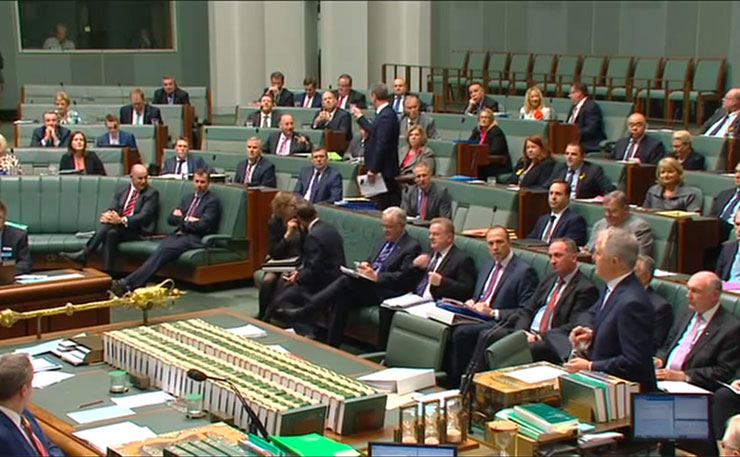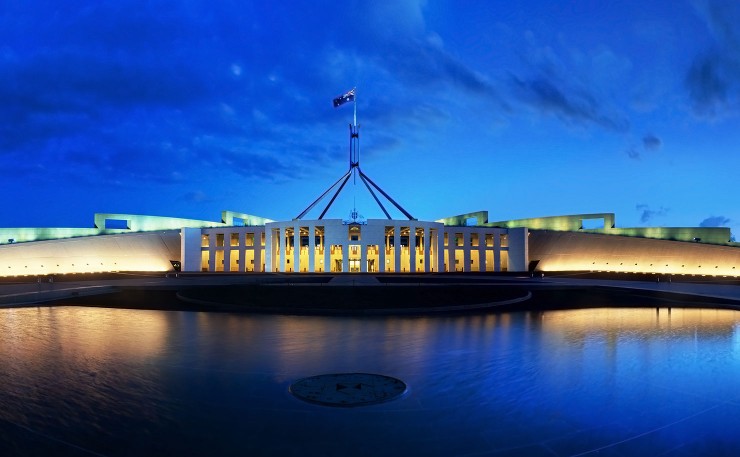Sure, Tony Abbott was pretty bad, but Australia is unlikely to end up with a ‘Trump in the Lodge’ for one very simple reason, write Tony Shields and Rod Campbell.
With each day the new Trump administration courts controversy on a new topic. Racist travel bans, alternative facts, and going ahead with a great big wall. With Cory Bernardi splitting and George Christensen hinting he may join Pauline Hanson, it begs the question – could we end up with a Trump-style administration here?
Of course, we don’t have a president and the power of the executive is more limited here. But there’s another key reason why we’re unlikely to see an extreme Australian government with power as unchecked as the Trump administration appears. It’s about time we started to appreciate what is probably Australia’s most underappreciated asset – compulsory voting.
Without compulsory voting, Australia would have evolved into a very different country. Compulsory voting was first introduced in Queensland in 1915, in federal elections in 1925 and then to all states. Without it, the wealthy would be wealthier and the powerful more powerful. The rest of us would be more dissatisfied and Australia would be more fractious and conflict-driven.
Why? Because, as study after study finds, when voting is optional, it is those with lower incomes and more disadvantage who are more likely to stop voting. This happens for two reasons. Understandably, when life has not been so kind and society has not been giving you many breaks, you are likely to be less enthusiastic about participating in society and voting.
![1969 Federal election coverage, in Brisbane. What an election night tally room can look like - the Brisbane scene at the Federal poll [1969]. At front row of desks L-R: F McKechnie (News), R Greening (News), A Maniaty (News) and Mrs Nona Shea (comptometrist). (IMAGE: ABC, Flickr)](https://newmatilda.com/app/uploads/2017/03/Federal-election-1966.jpg)
Politicians aren’t stupid. They know who votes and they enact policies to attract the votes of those who do.
Consider what happened when voting was made compulsory in Australian federal elections in 1924. Between 1920 and 1930, spending on the old age pension as a percentage of GDP rose more than 60 per cent, dramatically reducing poverty among older people. Similarly, when women got the vote in the United States there were large, sudden increases in public health programs (such as immunisation programs) and child mortality declined by 8-15 percent (or 20,000 annual child deaths nationwide).
Want (part of) an explanation of why Australia has world leading firearms legislation whereas in the United States around 33,000 Americans are killed by firearms each year? In Australia, politicians could count on the votes of the majority who are supportive of firearms legislation, but who wouldn’t vote if voting wasn’t a) compulsory and b) part of Australian culture. Many of those who were not strongly supportive may not attend a polling booth. Compulsory voting ensures politicians pay attention to groups that they would not have to pay attention to if voting was optional.
Want an explanation of why Donald Trump is so outrageous? When voting is optional political parties not only have to get people to support them, it also has to make them supportive enough that they bother to get to a polling booth. It makes sense then for politicians to find scapegoats and encourage conflict in order to make disengaged voters outraged enough to bother to vote.
Want an explanation of why money plays such a huge part in US elections? Part of the explanation lies in their optional voting system. It makes more sense for the wealthy and powerful to influence US politicians because the interests of those people who do vote (those with better incomes and better education) are more likely to align with the interests of the wealthy.
Want a major part of the explanation of why extremist, populist movements are on the rise in the US and Europe? Most of those countries don’t have a well-enforced compulsory voting system and average voting turnout across OECD countries has fallen from around 80-85% in the 1960’s to around 65% currently.
Instead of Lincoln’s dictum of ‘government of the people, by the people, for the people’, their governments have become ‘government of the people, by the wealthier and better educated, for the wealthier and better educated’. Or to use the in-vogue term, ‘government of the people, by the elite, for the elite’. It’s not surprising then that there is an anti-elitist, populist reaction.

Compulsory voting has made voter turnout high and our government more representative, but it has not insulated Australia from the worldwide trend of declining voter turnout. After averaging a very steady 95 per cent since compulsory voting was introduced in 1925, turnout started falling at the 2010 federal election and fell to 91 per cent in 2016 – the lowest rate recorded since compulsory voting was introduced.
That is, 1.4 million Australians didn’t bother to vote at the last election. In addition, 800,000 weren’t enrolled to vote and 700,000 voters voted informally. These are the sort of numbers that make our government less representative.
If Australia is to escape the tension and extremist movements that have occurred in the rest of the world, it is important that we strengthen our compulsory voting system, rather than let it slowly wither away.
In a recent submission we (The Australia Institute) made to a parliamentary committee investigating the last federal election we made three recommendations.
Firstly, emphasising that voting is part of the Australia tradition for which we should all be proud. Australia has a history as a world leader in democratic reform which should be highlighted to current generations who haven’t seen these battles up close.
We were world leaders giving the vote to all men when South Australia gave all men (except Indigenous voters) the vote in 1857. We were world leaders in giving the vote to women when South Australia gave women the vote in 1896. We were world leaders in introducing the secret ballot, so much so that in the US and elsewhere it is known as the Australian ballot.
Secondly, consider increasing the fine for not voting in federal elections. The current $20 fine for not voting in federal elections has not changed since 1984. A $70 fine would restore it to the equivalent of what it was in 1984. The Australian Electoral Commission should investigate the behavioural and socio-economic impact of a fine and its imposition and enforcement.
Thirdly, the Australian Electoral Commission adopt a 95/95/95 goal for federal elections, that is:
- 95% enrolment rate – 95% of adults eligible to be enrolled are enrolled
- 95% turnout rate – 95% of eligible voters attend a polling booth to vote
- 95% valid vote – 5% or less of votes are invalid.
Six of the seven times our federal and state governments introduced compulsory voting, both major parties supported it. It is doubtful though they realised how far-reaching their decision would be in making voter turnout socially even and influencing the type of nation Australia was to become.
Unlike them though, we now have an envious history to draw on and bookcases of research which highlight the strengths of compulsory voting. We also have a clear example in the USA of what happens when voter turnout is low and unrepresentative.
We need to restore our voting rate and strengthen our compulsory voting system. We don’t want to wake up in 20 years’ time and find out that ‘we don’t know what we got till it’s gone’.
Donate To New Matilda
New Matilda is a small, independent media outlet. We survive through reader contributions, and never losing a lawsuit. If you got something from this article, giving something back helps us to continue speaking truth to power. Every little bit counts.






